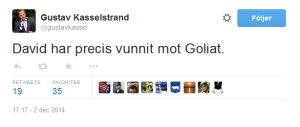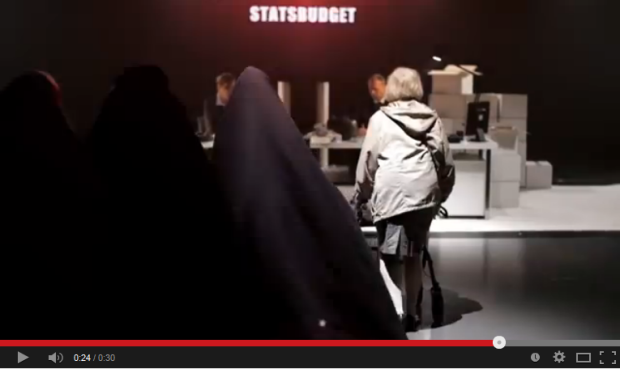Feminism is an important issue that concerns not only women but society as a whole. Feminism is difficult to define, as it is as ideologically contingent as it is an economical, sexual, and political question. Whereas some feminists would say that the best way to promote women is to encourage higher education in order to get higher paid jobs, others claim it is better to increase minimum wages and conditions in the public sector where many women work. Others believe feminism is a done deal in Western countries and is needed only in less free countries. Therefore I will stick to a definition I think most would agree on; that it is about equality between women and men. And that is far from yet achieved in the west.
When Hillary Clinton became Secretary of State in 2009 she allegedly mentioned women 450 times during her first five months. That means a new dawn for feminism in international politics, as no other politician as powerful as her has made women’s rights a linchpin of foreign policy. Now odds are that Hillary Clinton will be the next American president and establish feminism on the American and international agenda. Therefore, I decided to take a look at a feminist campaign in the big country in the West.
A campaign made by UN Women released in the USA uses the Internet to reveal how the world really feels about women. Google search is programmed to show popular searches in a drop-down as a word is being typed in, and this function is used by the campaign.
Even though the searches were made in Dubai, there were allegedly many similarities with the U.S results. It is indeed depressing:
What this campaign aims to do is to portray how down right misogyny is as world-encompassing as Google. These opinions are typed in everywhere and among all peoples, as the women’s different ethnicities symbolise. It is a global issue but the solution lies within the individual – the responsibility is not only international actors’ such as the UN or a future American Ms. President:
“Of the three major psychological groups – Pioneers, Prospectors and Settlers – only the first are likely to “think globally and act locally”. The others tend to see the international framing of the problem as denoting that the solution has to be by ‘international actors’ like presidents and prime ministers, that it is ‘not people like us’” (Rose 2010:29)
Pioneers are by Chris Rose defined as “They act as the ‘scouts’ for society, testing out and developing new behaviours. A dynamic of a model which campaigners can utilize, is that new things start with the Pioneers (IDs), may be adopted by the Prospectors (ODs), and only then are likely to be taken up by the Settlers (SDs).”(Rose 2010:29)
The campaign has an international frame and therefore realistically targets only the first group. It seeks out to Pioneers who understand that global issues can be solved on a local level if we all just scrutinise our own behaviour and prejudice, and seek to influence our closest environment to do the same. Prospectors and Settlers thus might need further guidance from Pioneers or actors like Hillary Clinton.
The campaign resonates with everyone who desires to make a change by going first. Hillary Clinton also argues with a world-encompassing framing:
The campaign’s and Hillary Clinton’s message is that every Pioneer out there matters when it comes to raising awareness on misogyny and to educate on feminism. Everyone needs to look at themselves, be a Pioneer in their own right and try and educate their peers. With that said, I wish Clinton the best of luck in 2016.
Reference: Rose, Chris. How To Win Campaigns: Communications for Change (2010) Routledge







 SDU’s (Sweden Democratic Youth) president Gustav Kasselstrand: “David has just won against Goliath.”
SDU’s (Sweden Democratic Youth) president Gustav Kasselstrand: “David has just won against Goliath.”







